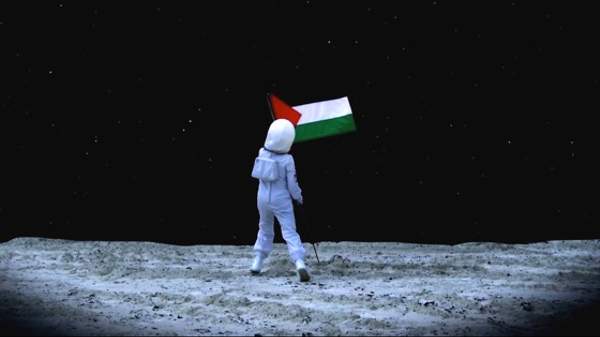Overview
The exhibition Beyond the Last Sky: Contemporary Palestinian Photography and Video takes its title from a line in poem by Mahmoud Darwish, borrowed by Edward Said as the title of a book on Palestine. In a media landscape often depicting Palestinians as terrorists, martyrs, the sainted or the demonic, Beyond the Last Sky’s approach is in itself a radical view: that Palestinian people are just people, like people elsewhere.
Israel isn’t a subject of this exhibition, though the day-to-day trappings of the Israeli occupation of the Palestinian Territories certainly are. Rather, this is an exhibtion where artists comment on everyday life in the territories. The art takes place in Israel’s shadow, but its subject stays the everyday life of Palestinian people. With this, it feels strange to be a Jew — one neither opposing the existence of a state of Israel, nor the existence of a Palestinian state — to be reviewing an exhibition like this, and casting my own shadow over the works within.
Raeda Saadeh’s Mona Lisa is an image of the artist enigmatically smiling as Da Vinci’s Mona Lisa. In place of the fantastic vista behind the original is what seems to the untrained eye to be a romantic vista of a random holy-land hill settlement. It’s actually an israeli settlement. Taysir Batniji’s Watchtowers was originally intended to be a typology of Israeli watchtowers. From a distance, they look like a series of crusader-era forts. Closer, it seems to be a collection of concrete water towers and weather stations, the concrete aged and the windows bare and functional. To a Sydneysider’s eye, these things seem free of violence. What comes as a shock is slowly becoming aware of the sheer number of the towers.
Yazan Khalili’s Color Correction shows al-Am’ari refugee camp, a picture filled with hundreds of square concrete houses — an international architectural vocabulary of poverty — each coloured by the artist like hill houses in Mexico’s Guanajuato, adding a colour in reproduction that isn’t there in daily life. The colours are beautiful. Life there is, presumably, less so. Sharif Waled’s Beace Brocess shows Israeli Prime Minister Ehud Barak and Palestinian Authoritey Chariman Yasser Arafat fighting each other playfully to let the other through a door first. Waled plays this in silhouette, as a Chaplinesque silent movie. Now, twelve years after that more promising phase of the peace process, an accord acceptable to both side is still yet to arrive.
Funniest, and probably the most biting satire relevant to a local audience, is Jacqueline Reem Salloum’s Planet of the Arabs. A mash-up of Arab stereotypes in TV and Hollywood, spliced into a long film trailer, it is a denouncement of every Arab stereotype and casual terrorist villain you may have taken for granted on the screen.
Larissa Sansour’s A Space Exodus, finally, is one of the highlights of the show. Funny and fun to watch, its a recreation of the moon landing which seems to suggest, despairingly, the prospect of a Palestinian on the moon as being easier to imagine than an end to the region’s troubles. 2001’s astronaut, spacesuit and soundtrack are all passed through a Palestinian filter, culminating with a Palestinian flag on the lunar soil.
Still from A Space Exodus by Larissa Sansour.
Features
Information
When
Saturday, September 1, 2012 - Sunday, November 18, 2012
Saturday, September 1 - Sunday, November 18, 2012
Where
Australian Centre for Photography72 Oxford Street
Darlinghurst
